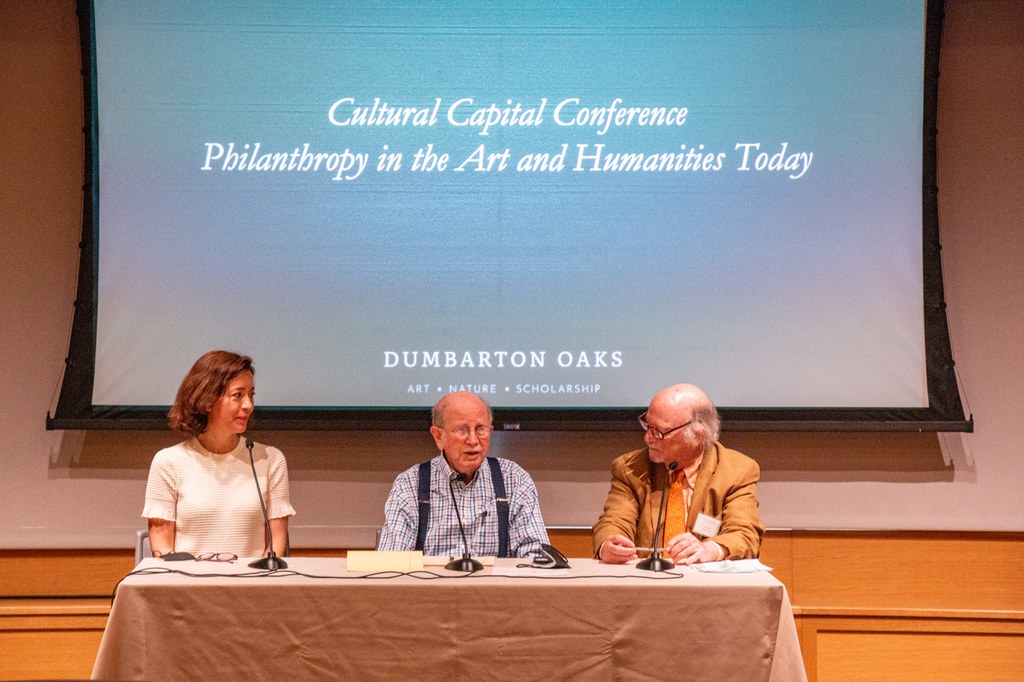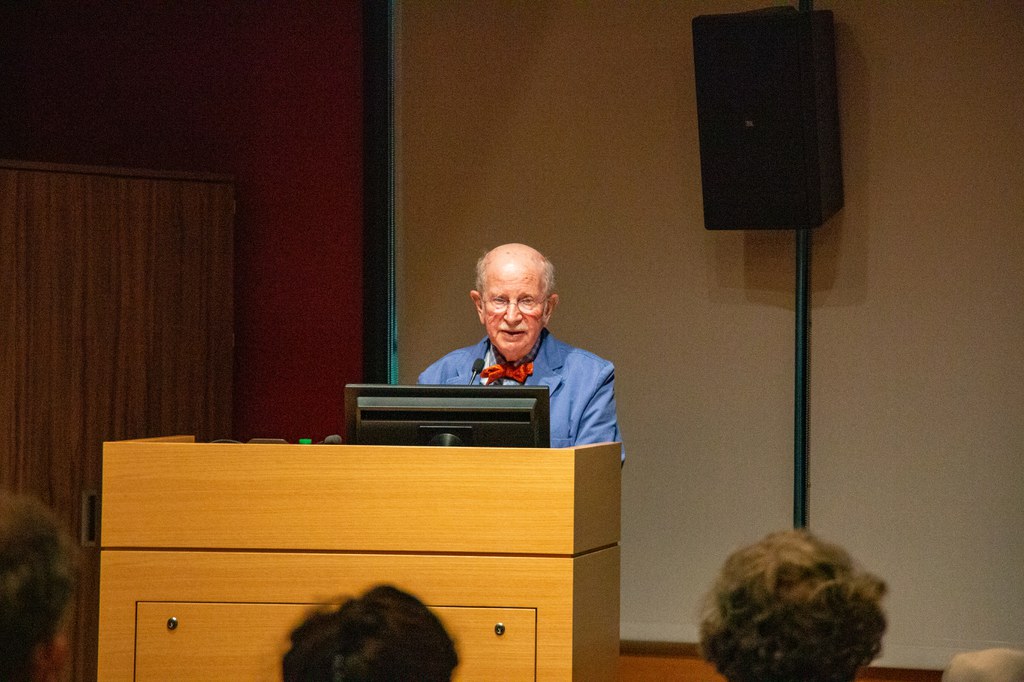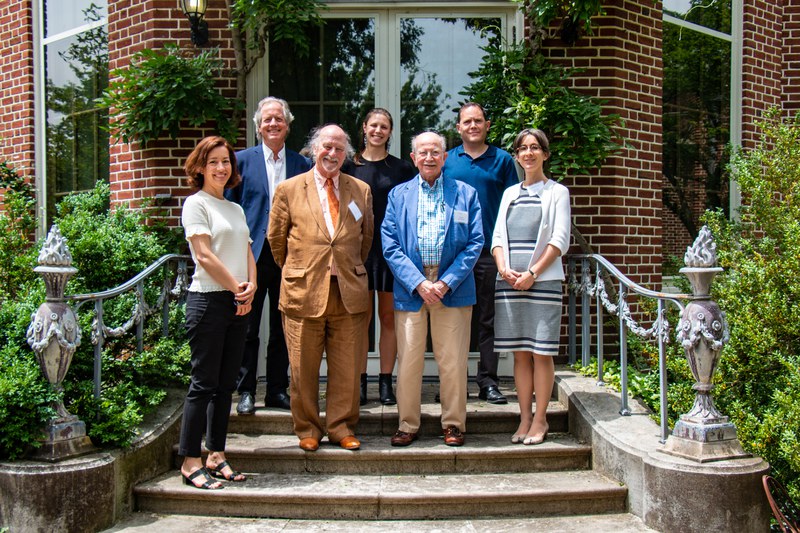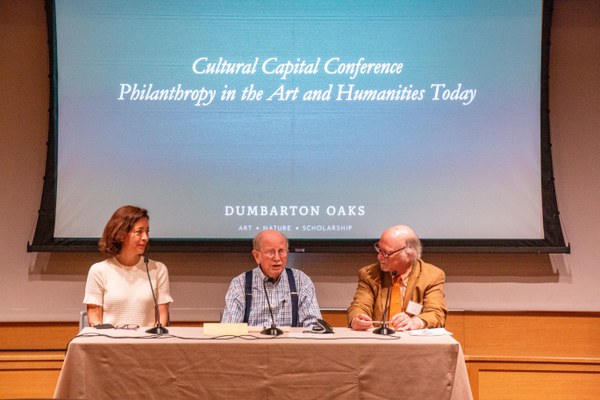By Lauren Toman

On June 2 and 3, Dumbarton Oaks held its inaugural conference on philanthropy. “Cultural Capital: Philanthropy in the Arts and Humanities Today” was a unique experience that investigated the salient questions of present-day philanthropy in cultural contexts. Spread out over the two days, eight distinguished speakers from distinct areas provided noteworthy perspectives and concerns on the flourishing area of cultural philanthropy.
The conference commenced with a keynote address by Stanley Katz, president emeritus of the American Council of Learned Societies. As a specialist on philanthropy and nonprofits, Katz began his lecture on the current state of philanthropy in the United States and its impact on society. This initial talk ignited conversations pertaining to philanthropy and set the stage for the eventful second day of the conference that went in-depth on multiple facets and issues on the subject.

The following day began with discussions centered on philanthropic giving in the United States. Jeffrey Rosen, president and CEO of the National Constitution Center, opened the conversations by introducing the importance of cultural institutions by way of using his organization, the National Constitutional Center, to talk about addressing the polarization in civil society through civic education. Continuing in the theme of the value of cultural institutions and philanthropy in America, Amanda Moniz shared her experience as the first curator of philanthropy at the Smithsonian Museum of American History. Moniz expressed why philanthropy is critical to understanding the history and social formation of this country as well as the significance to collecting and displaying philanthropic objects.
Benjamin Soskis, senior research associate at the Urban Institute’s Center on Nonprofits and Philanthropy, and John Wetenhall, founding director of the George Washington University Museum, then spoke to reveal some of the complications around donors’ gifts to museums. Soskis examined how museums respond to the legacy of the philanthropy of the Sackler family, which bought social capital that overshadows the opioid epidemic caused by their business practices. Wetenhall described museum governance and the challenges sometimes brought on by pressures from a donor’s vision and desires for the institution.
The final three talks broached the idea of the impact and influence of philanthropy. Francie Ostrower, professor at the University of Texas at Austin, shared her research on audience sustainability in performing arts organizations that explored the community value of these institutions and their efforts to change to become more inclusive and diverse. Following Ostrower, Kathleen D. McCarthy, professor of history at the Graduate Center, CUNY, spoke on the role of women in philanthropy, which often gets overlooked but is essential to the development of charitable giving in the United States. Concluding the conference was Patricia A. Banks, professor in the department of sociology and anthropology at Mount Holyoke College, who reflected on corporate giving to Black organizations. She investigated the motivations behind this giving to reveal that some corporations use their philanthropic gifts as ways to promote a cultural capital that she has named “diversity capital” to better their image in society.

As the conference wrapped up, audience members walked away contemplating and critically examining cultural philanthropy. In response to the conversations, David Odo, director of academic and public programming at the Harvard Art Museums, who was in attendance, commented that “the conference provided extremely useful history for cultural philanthropy, which was enormously helpful in understanding current conditions.” He was particularly interested to hear a number of speakers analyze contemporary cases, which “will be very instructive for those of us concerned with supporting cultural institutions in an ethical and sustainable manner.” Similarly, Eurydice Georganteli, lecturer in Harvard’s history of art and architecture department, noted that through the “thought-provoking and inspirational talks by cultural industry leaders reminded me why humanities and the arts matter now more than ever.” She continued, “Are the leaders of today and the future ready to embrace cultural philanthropy? This conference showed there is a path ahead.”
Although the conference has come to an end, Dumbarton Oaks continues to engage in conversations pertaining to cultural philanthropy. To learn more about cultural philanthropy in and around Washington, DC, visit our Mapping Cultural Philanthropy digital resource.
Lauren Toman is the postgraduate cultural philanthropy fellow.

